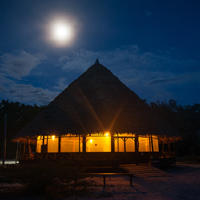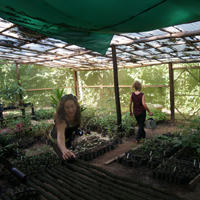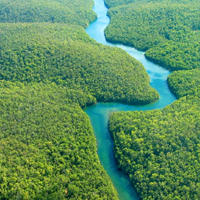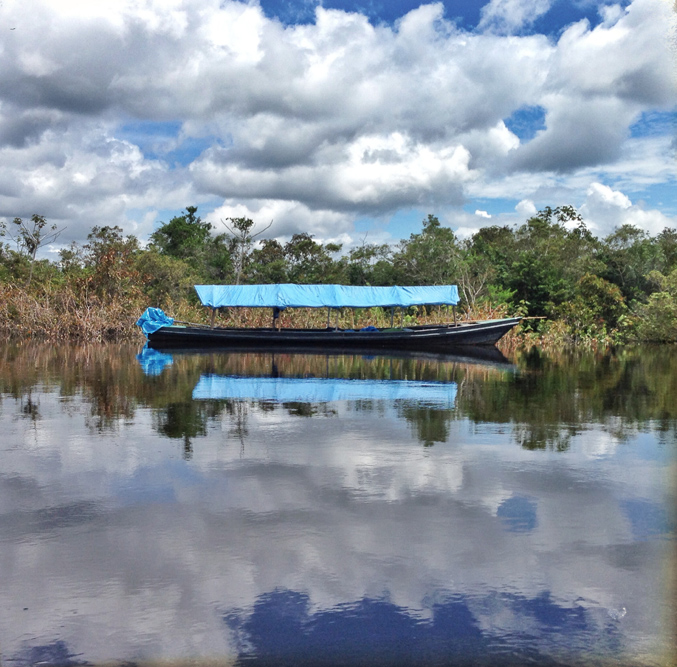
Amazon boat reflecting in the high waters, on the way to Nihue Rao. Photo by Tracey Eller
Documentary photographer Tracey Eller was awarded a Cosmic Sister Plant Spirit Grant so she could experience the healing and consciousness-expanding journey of ayahuasca ceremony at Nihue Rao Centro Espiritual in the Peruvian Amazon. Ayahuasca, a traditional psychedelic brew, is not only legal in Peru but is designated as a “cultural patrimony” by the Peruvian government. Eller was on assignment for Utne Reader, sponsored by the Cosmic Sister Women of the Psychedelic Renaissance educational initiative. A visual storyteller who describes her camera as “a gateway to understanding myself and the world,” Eller was completely in her element when she stepped out of a moto-taxi and into the jungle.
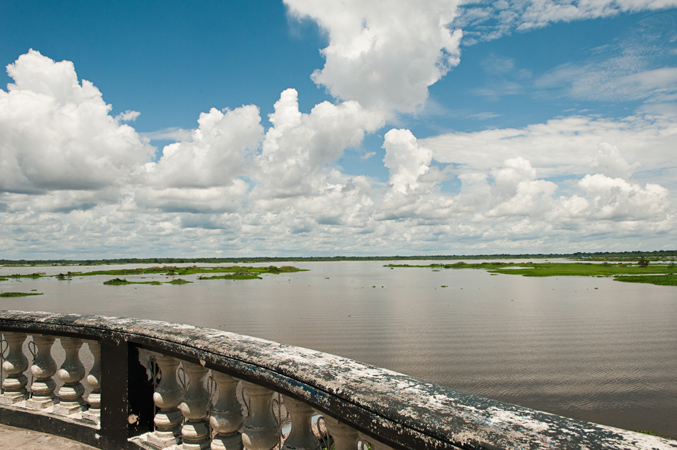 The view from Captain Bill’s Amazon Explorer’s Club in Iquitos, Peru, a bustling river town where an estimated 25 percent of the tourists are ayahuasca journeyers on their way to or from retreats.
The view from Captain Bill’s Amazon Explorer’s Club in Iquitos, Peru, a bustling river town where an estimated 25 percent of the tourists are ayahuasca journeyers on their way to or from retreats.
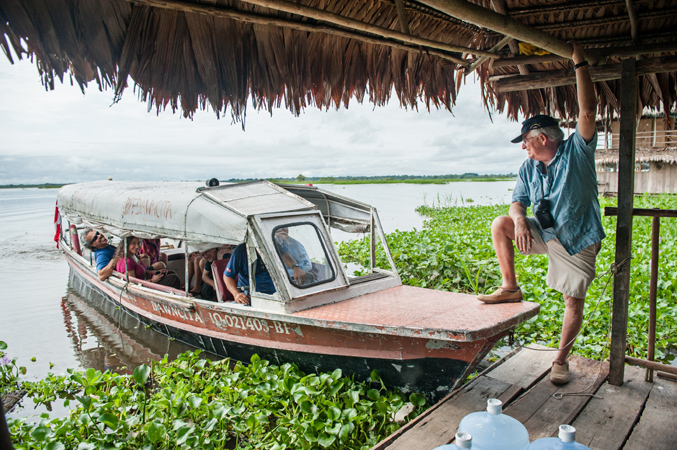 During a private river dolphin tour on Captain Bill’s boat Dawnsita we saw two species of camera-elusive dolphins: the remarkable bubble-gum pink Boto (Inia geoffrensis) that has inspired many local myths, and the Tucuxi (Sotalia fluviatilis), a small, lovely dark silver dolphin with a bright pink underbelly.
During a private river dolphin tour on Captain Bill’s boat Dawnsita we saw two species of camera-elusive dolphins: the remarkable bubble-gum pink Boto (Inia geoffrensis) that has inspired many local myths, and the Tucuxi (Sotalia fluviatilis), a small, lovely dark silver dolphin with a bright pink underbelly.
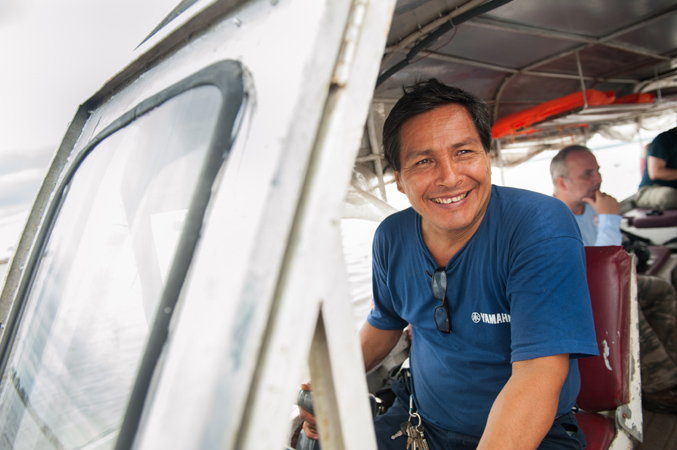 An experienced driver takes us out on the river. Cedric Gilleman is in the background, founder of Solinia , an Iquitos-based nonprofit working to protect the river dolphins of Peru, at the confluence of the Amazon and Ataya rivers, where Boto and Tucuxi dolphins feast on fish that are confused by the chaotic currents.
An experienced driver takes us out on the river. Cedric Gilleman is in the background, founder of Solinia , an Iquitos-based nonprofit working to protect the river dolphins of Peru, at the confluence of the Amazon and Ataya rivers, where Boto and Tucuxi dolphins feast on fish that are confused by the chaotic currents.
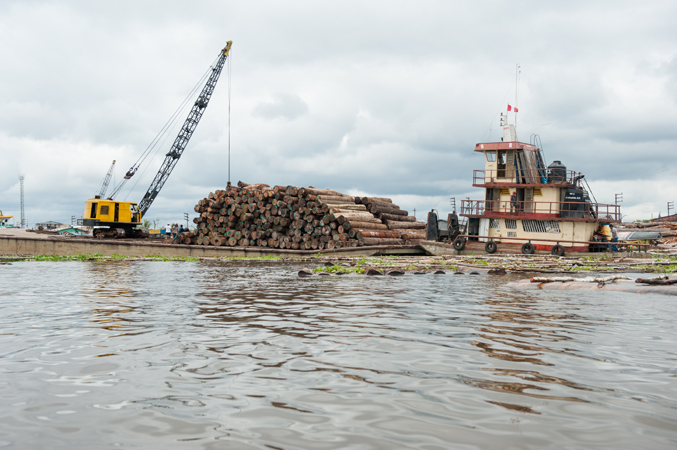 Old-growth lumberyards line the banks of the Amazon and Ataya rivers. Sadly, the destruction of the world’s primary rainforests continues to accelerate as 7.5 billion people compete for natural resources. Water pollution caused by timber production and other extractive industries also puts dolphins and all wildlife at risk.
Old-growth lumberyards line the banks of the Amazon and Ataya rivers. Sadly, the destruction of the world’s primary rainforests continues to accelerate as 7.5 billion people compete for natural resources. Water pollution caused by timber production and other extractive industries also puts dolphins and all wildlife at risk.
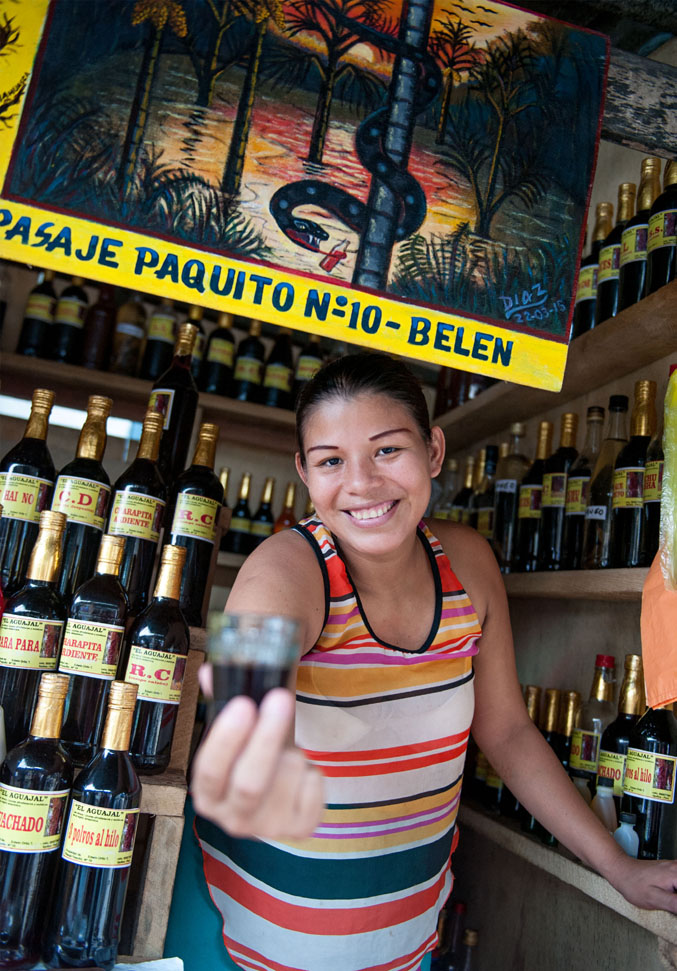 A vendor at Witches Alley, a medicinal plant market section in the Belene Mercado in Iquitos, offers a sample of the famous mojo-boosting 7 Roots Tonic.
A vendor at Witches Alley, a medicinal plant market section in the Belene Mercado in Iquitos, offers a sample of the famous mojo-boosting 7 Roots Tonic.
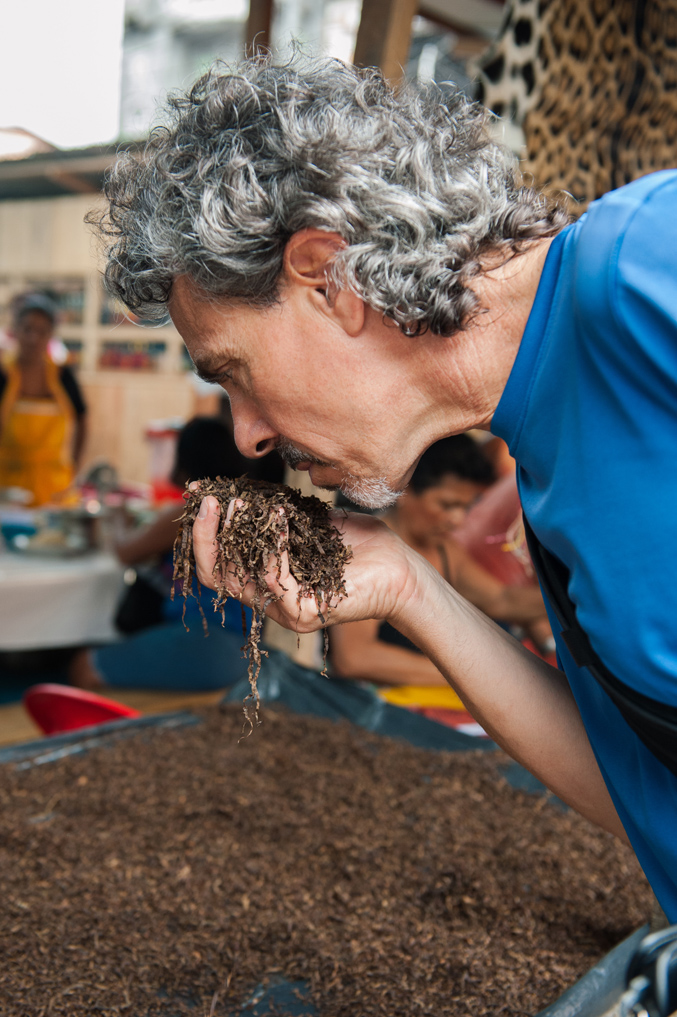 Ethnobotanist Chris Kilham, founder of the Ayahuasca Test Pilots, smells mapacho, a sacred tobacco native to the Amazon that shamans use in ceremonies for cleansing and protection.
Ethnobotanist Chris Kilham, founder of the Ayahuasca Test Pilots, smells mapacho, a sacred tobacco native to the Amazon that shamans use in ceremonies for cleansing and protection.
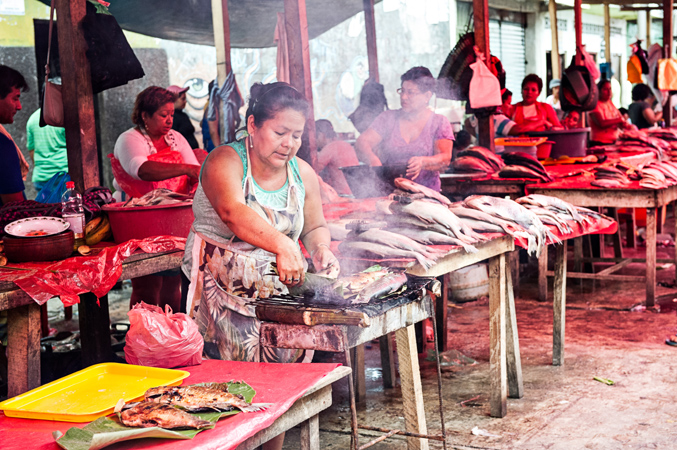 In the market, as women display and grill the catch of the day, the air is thick with smoke and the strong smell of fish.
In the market, as women display and grill the catch of the day, the air is thick with smoke and the strong smell of fish.
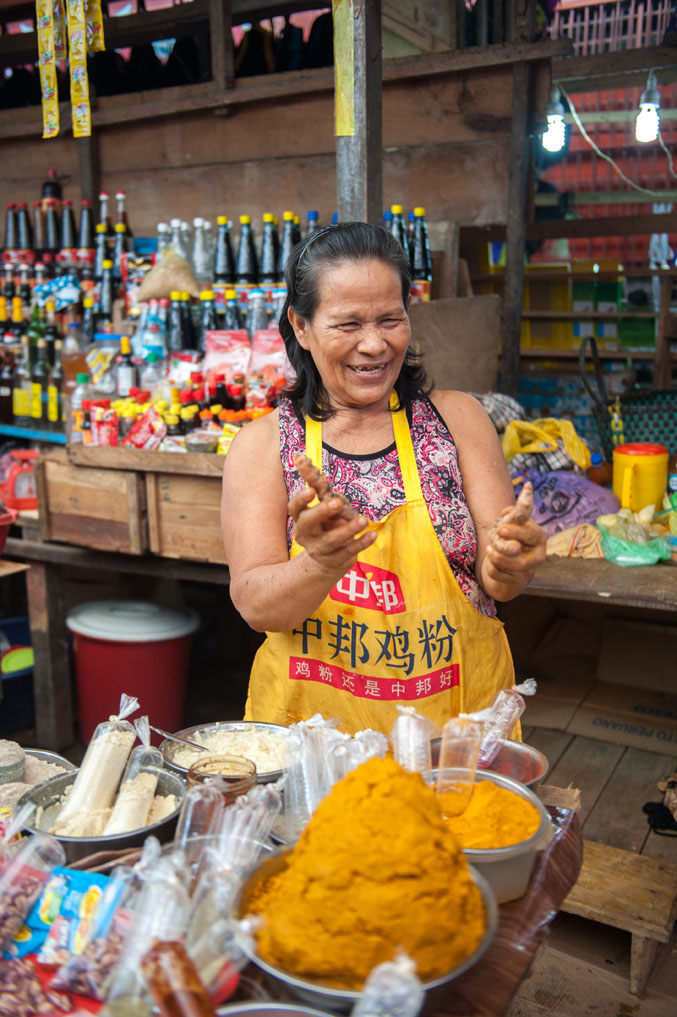 In the market, a woman offers colorful turmeric root, powerful medicine and delicious spice.
In the market, a woman offers colorful turmeric root, powerful medicine and delicious spice.
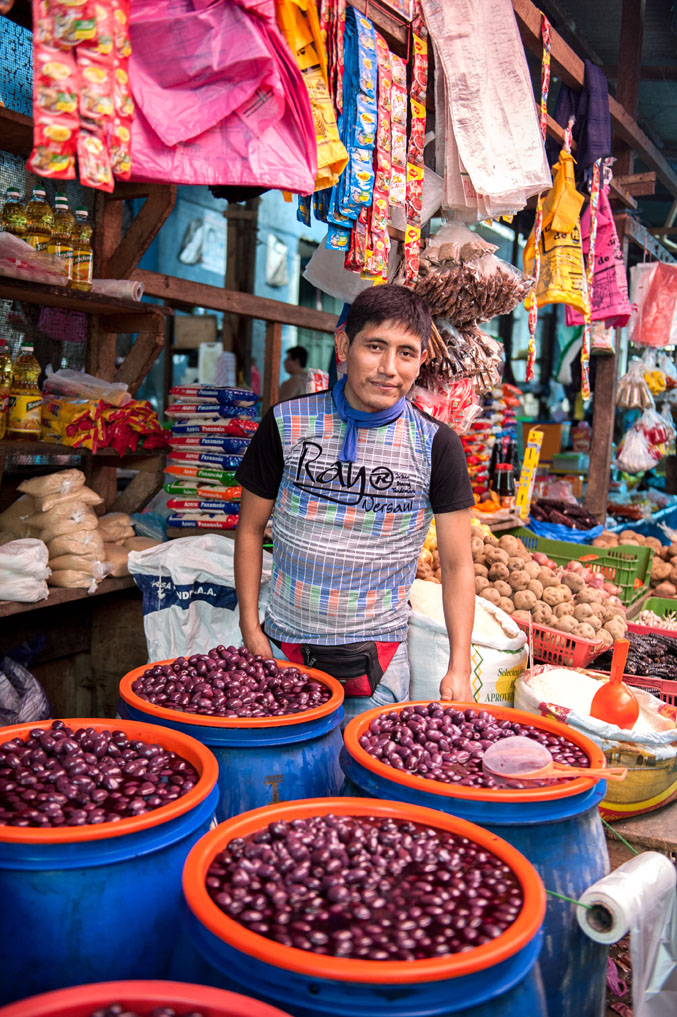 In the market, a man displays magnificent barrels of fresh olives.
In the market, a man displays magnificent barrels of fresh olives.
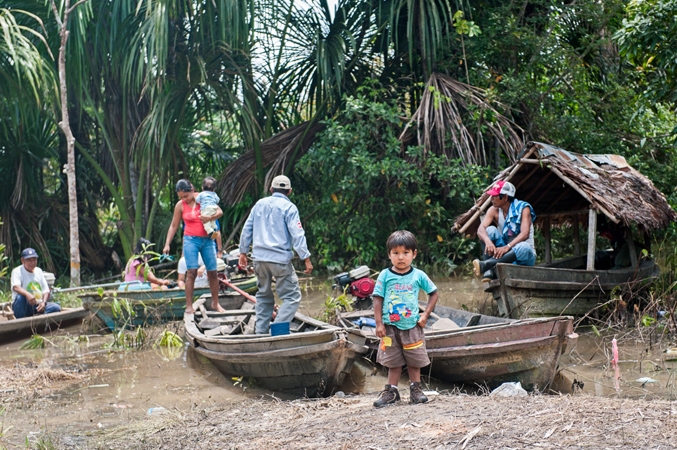 Getting to Nihue Rao is a process entailing a long, muddy motorcar ride and waiting on flooded banks in the heat of high noon for a boat. During the wet season, families travel in boats of all shapes and sizes.
Getting to Nihue Rao is a process entailing a long, muddy motorcar ride and waiting on flooded banks in the heat of high noon for a boat. During the wet season, families travel in boats of all shapes and sizes.
 A little girl carries her dog through the mud to meet us.
A little girl carries her dog through the mud to meet us.
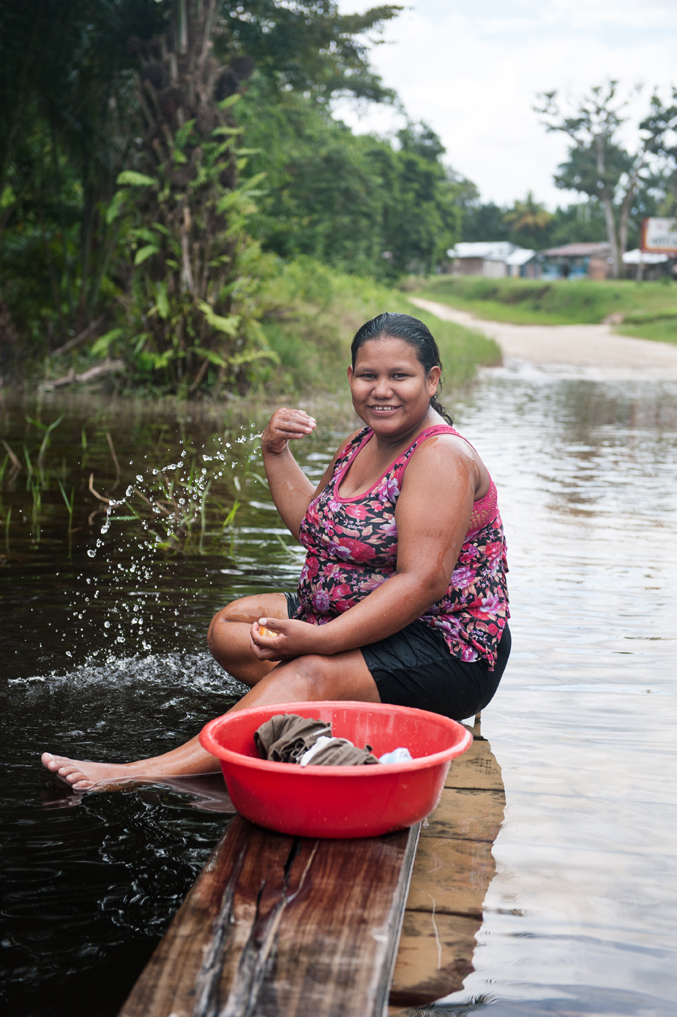 A señora makes use of a flooded bridge to wash her family’s laundry while soaking in cool water.
A señora makes use of a flooded bridge to wash her family’s laundry while soaking in cool water.
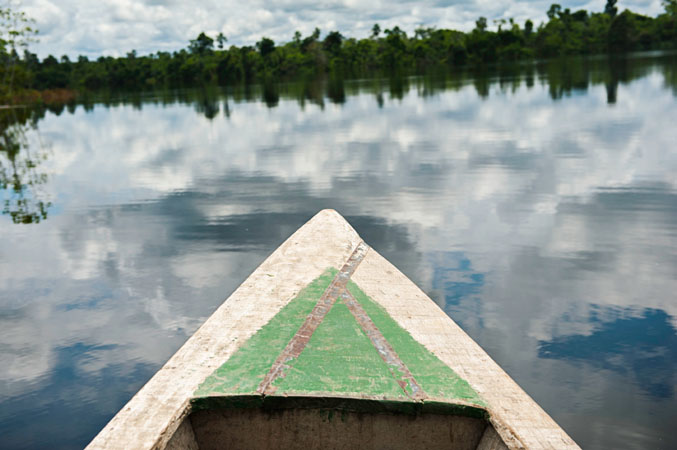 The bow of our covered riverboat taxi frames blue skies and fluffy clouds reflected in the clear, still water. For much of the year, this area is dry jungle land.
The bow of our covered riverboat taxi frames blue skies and fluffy clouds reflected in the clear, still water. For much of the year, this area is dry jungle land.
 Amazon boat reflecting in the high waters, on the way to Nihue Rao.
Amazon boat reflecting in the high waters, on the way to Nihue Rao.
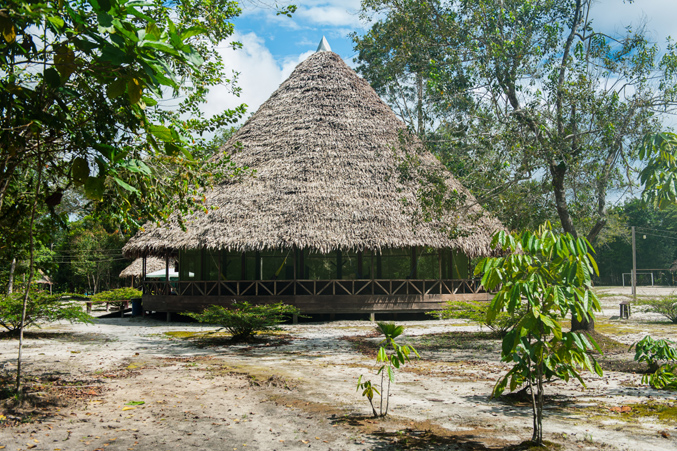 In the Shipibo language, “nihue” means air (breath/wind) and “rao” means medicine. A master plant used in the advanced stages of a healers’ traditional training. The plant thrives around the Nihue Roa ceremonial maloka and throughout the center.
In the Shipibo language, “nihue” means air (breath/wind) and “rao” means medicine. A master plant used in the advanced stages of a healers’ traditional training. The plant thrives around the Nihue Roa ceremonial maloka and throughout the center.
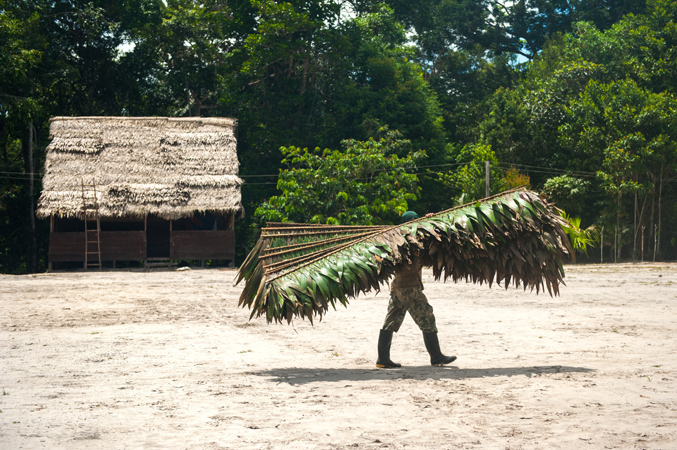 A Shipibo man with expertise in local building techniques carries traditional, sustainable leaf roofing sections to a bungalow at Nihue Rao Central Espiritual. When the palm leaves wear out, they’re completely biodegradable.
A Shipibo man with expertise in local building techniques carries traditional, sustainable leaf roofing sections to a bungalow at Nihue Rao Central Espiritual. When the palm leaves wear out, they’re completely biodegradable.
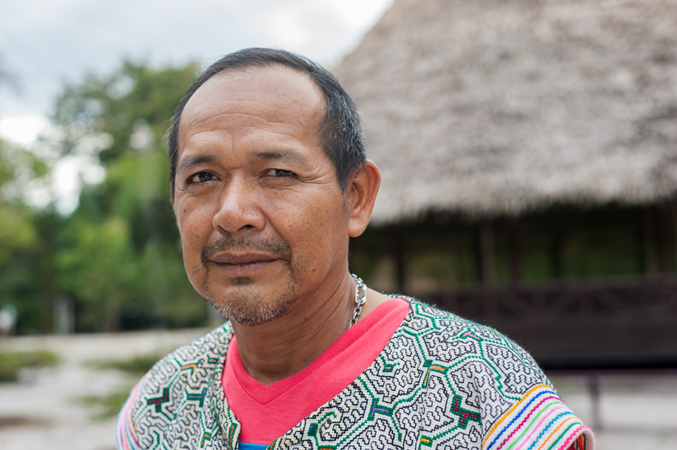 Shipibo Maestro Shaman Ricardo Amaringo, one of the most talented and respected ayahuasca shamans in Peru and one of Nihue Rao’s three founding partners, leads ceremonies in the maloka.
Shipibo Maestro Shaman Ricardo Amaringo, one of the most talented and respected ayahuasca shamans in Peru and one of Nihue Rao’s three founding partners, leads ceremonies in the maloka.
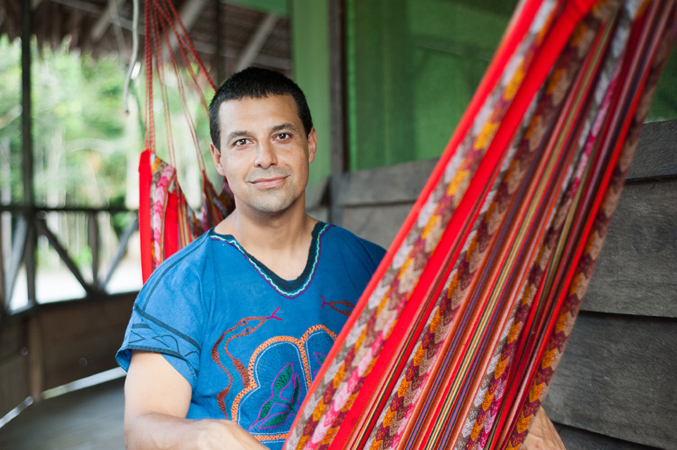
Colombian-American integrative family physician Joe Tafur, M.D., relaxes in one of the colorful hammocks around the maloka. One of three founding partners of Nihue Rao, Tafur has completed his shamanic initiation under Amaringo. He’s a welcome and comforting presence in ceremony.
